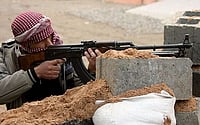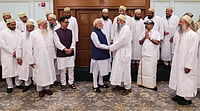Every Mumbaikar, commuting by local trains, has tried to dig into the legend of the eclectic history of the city’s iconic railway station names. Was there a mysterious church with a large gate at Churchgate station? Did Chichpokli have ‘chinch’ or tamarind trees? Was Andheri engulfed in deep darkness?
The names of Mumbai’s railway stations, part of the country’s first and oldest rail network developed almost 170 years ago, are steeped deep in the city’s rich cultural and geographical history. Many of them have been derived from a fusion of the local Marathi language and corrupted English versions used by the British. Charni Road, for instance, is believed to have evolved from ‘charne’ —grazing in Marathi— after the large grazing grounds in the area. Other stations in the main island and the extended suburbs too were named after the villages or famous landmarks located around them and offer a delightful peak in the past.
The stories behind these delightful etymologies are now on the verge of disappearance. The Maharashtra government on Wednesday approved a proposal to rename eight railway stations on the Western, Central, and Harbour local lines. The station names will be changed after the approval of the Union Railway Ministry.
“Mumbaikars felt that the British-era names of railway stations in Mumbai should also be changed while the central government is taking the initiative to erase the traces of Indian sovereignty,” MP Rahul Shevale, who tabled the proposal in the state cabinet, said on X (formerly Twitter).
Mumbai Central will be named after social reformer and educationalist Nana Jagannath Shankarsheth, Marine Lines will refer to the city’s deity Mumbadevi, Charni Road will be Girgaon (old mill area), Curry Road will be known by the traditional Marathi name of Lalbaug, Sandhurst Road will be known as Dongri, Cotton Green will be renamed Kalachowki, Dockyard as Mazgaon, and King’s Circle as Tirthankar Parswanath after the 23rd Tirthankara as an ode to the city’s Jain community.
The state government has put on hold the renaming of four more railway stations, including Churchgate proposed to be named after the late Shiv Sena supremo Bal Thackeray, Grant Road as Gamdevi, Bandra Terminus as Dr Babasaheb Ambedkar Bandra Terminus, and Reay Road as Ghodapdev.
Mumbai has been familiar with the name-change game. The city’s older name Bombay was officially changed to Mumbai —tribute to goddess Mumbadevi— after Shiv Sena came to power in 1995 to erase the colonial imprints and reflect its local history.
The names of the Mumbai railway stations have previously undergone changes. The most prominent is the UNESCO heritage-listed Chhatrapati Shivaji Maharaj Terminus which has witnessed four name changes.
When the station was constructed in the year 1848, it was called Bori Bundar after the large sacks (bori) hauled in the port area famous for import and exports of goods. Around 1888, a much grander structure, Victoria Terminus, was constructed to commemorate the then-reigning British Empress Queen Victoria. Designed in the Indo-Saracenic Victorian Gothic, the imposing landmark was one of the largest and tallest structures in Bombay. As the first station on the Central and Harbour lines, it remained popular by its abbreviated version of ‘VT Station’. In March 1996, the ruling Shiv Sena took its sons-of-the-soil politics a notch higher by renaming VT to Chhatrapati Shivaji Terminus (CST) after the 17th-century Maratha king. In 2017, the station was again renamed in its current form as CSMT.
Historian Simin Patel, who documents and archives Mumbai’s social and cultural history through her organization Bombaywalla, says the “blanket and blind” commemoration after an individual is an old and easy trick adopted by the state.
An ardent chronicler of old Bombay, Patel found that the names of the railway stations were closely affiliated to the flora fauna, vegetation, ponds, and other landscapes or professions practised in the area of its location. “The names of the station conveyed a sense of history. When commuters get down at a particular station, like the present location of Cotton Green, it informs them about the historic exchange of cotton, which took place there after it was moved from Fort and later to Colaba. The exteriors make a connection to the name,” says Patel.
Through her research on the etymology of the city’s landmark locations, Patel observed that commemorating people by giving their name to the train stations or roads and lanes was only a fraction of this trend and has picked up more in the last 30 years.
“The name of these locations helped us to understand the address. Even when the fort walls were razed and the gate was demolished, we still know and identify the area as Fort and Churchgate,” says Patel, referring to the walled locality in South Mumbai.
Patel rues that changing names wipes out the city’s fabric and culture. “It is yet another nail in the coffin of this city’s ever-changing landscape,” she says.


























